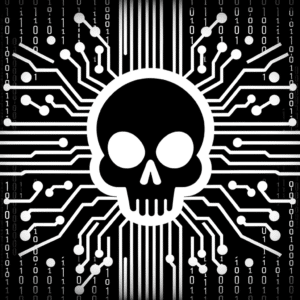In today’s digital era, cybersecurity is crucial as we heavily rely on digital communication, e-commerce, and data storage. With the increasing complexity of cyber threats challenging individuals, businesses, and governments, cybersecurity has rapidly evolved to meet these threats. This article highlights key advancements and breakthroughs in cybersecurity that have reshaped its landscape over the past year.
Understanding Cybersecurity
What is cybersecurity and why is it crucial in today’s world?
Cybersecurity is the process of defending computer systems, networks, and data from unauthorized access, attacks, and harm. It encompasses a range of methods and technologies designed to prevent, identify, and react to cyber threats. In an era where cyber-attacks are more frequent and advanced, cybersecurity plays a vital role in protecting sensitive data, preserving business operations, and upholding trust in digital interactions.
The evolving threat landscape:
How cyber threats have become more sophisticated over time?

Over time, cyber threats have become increasingly sophisticated and complex. Cybercriminals and hackers continuously develop new methods to exploit system vulnerabilities. The range of threats has expanded from conventional malware to advanced persistent threats (APTs), ransomware, and subtle social engineering tactics. These more focused and covert threats have caused significant damage, prompting the need for innovative cybersecurity strategies and technologies.
Key Developments in Cybersecurity
The rise of artificial intelligence in cybersecurity:
How AI is transforming the way we protect our digital assets?
Artificial intelligence (AI) is revolutionizing cybersecurity. AI systems are capable of analyzing huge data sets to spot patterns and unusual activity that could signal a cyber attack. Thanks to machine learning, these systems constantly improve, becoming better at recognizing and stopping attacks as they happen. AI also automates basic cybersecurity tasks, allowing experts to concentrate on more sophisticated and strategic security issues.
Machine learning algorithms: A game-changer in detecting and preventing cyber attacks
Machine learning, a type of artificial intelligence, has greatly improved how we handle cyber attacks. It works by examining large amounts of data to find unusual patterns that might indicate a threat. This helps organizations to quickly spot and deal with possible dangers. As machine learning keeps learning from new information, it gets better and more accurate at detecting these threats, making it a very effective weapon against cybercrime.
The impact of cloud computing on cybersecurity: Advantages and challenges
Cloud computing has changed how businesses work, making it easier to scale, more flexible, and cost-effective. But, it also brings new security issues. Since data and apps are stored online, it’s important for companies to protect this information from unauthorized access. While cloud service providers have strong security, companies also need to take steps to secure their data and keep an eye out for any security weaknesses.
The role of blockchain: Exploring the potential of decentralized security
Blockchain technology, the foundation of digital currencies like Bitcoin, could greatly improve cybersecurity. Its decentralized setup makes it very secure against changes and fraud. Organizations can use blockchain to better protect their online transactions, data storage, and identity checks. It also allows for safer, clearer management of supply chains, making sure products are genuine and traceable.
The importance of data privacy and compliance: Navigating the changing landscape of regulations
In a time when data breaches and privacy issues are rising, the importance of data privacy and following regulations is more critical than ever in cybersecurity. Companies need to adhere to various data protection laws, like the GDPR in Europe and the CCPA in California. Not following these rules can lead to big fines and harm their reputation. Therefore, companies are focusing more on protecting data and being open about how they use it.
Innovations in Cybersecurity Technologies
Next-generation firewalls: How they are revolutionizing network security.
Next-generation firewalls (NGFWs) are an upgrade from traditional firewalls, offering enhanced detection and blocking of threats. They monitor network traffic as it happens, spot harmful activities, and stop threats before they enter the network. NGFWs are equipped with features like recognizing specific applications, preventing intrusions, and examining data packets closely. This makes them highly effective against complex cyber attacks.
Endpoint protection solutions: Strengthening the defense against advanced threats
Devices like laptops, desktops, and smartphones are common targets for cyber attacks. Endpoint protection has advanced to offer strong security for these devices against malware, ransomware, and more sophisticated threats. This includes antivirus and anti-malware features, along with advanced threat detection, to keep these entry points safe and block unauthorized access.
Behavioral analytics: Identifying anomalies and detecting potential breaches
Behavioral analytics uses machine learning to study user behavior and spot unusual actions that might signal a cyber attack. It keeps track of user activities, sets standards for normal behavior, and identifies any deviations. This can alert organizations to possible security breaches. This approach is effective in detecting insider threats, compromised accounts, and other unauthorized actions.
Threat intelligence platforms: Leveraging real-time data to stay ahead of cyber threats
Threat intelligence platforms offer real-time updates on new cyber threats, weaknesses, and methods of attack. Organizations can use this information to evaluate their security, spot potential vulnerabilities, and take steps to lessen risks. These platforms help organizations stay ahead of cybercriminals and strengthen their cybersecurity.
Security orchestration and automation: Streamlining incident response and mitigation
Security orchestration and automation technologies help organizations simplify and speed up their response to security incidents by automating common security tasks. They connect different security tools and systems, allowing for coordinated incident response and quicker threat detection. This improves an organization’s ability to protect itself and react quickly to cyber threats.
The Human Factor in Cybersecurity
The role of cybersecurity awareness training: Educating employees to become the first line of defense
Technology is key in cybersecurity, but the role of people is just as important. Employees often are the most vulnerable part of a company’s defense against cyber threats. Training programs in cybersecurity awareness aim to teach employees about the significance of cybersecurity, typical threats, and how to best protect sensitive data. By making employees aware and proactive, organizations can greatly lower the chances of successful cyber attacks
Social engineering attacks: Understanding the tactics used by cybercriminals
Social engineering attacks like phishing and pretexting use psychological tricks to fool people into giving unauthorized access to systems or sensitive information. It’s crucial for organizations to know how these attacks work so they can teach their employees and put in place effective defenses. Increasing awareness and encouraging a cautious mindset can help reduce the risks of these types of attacks. 
Insider threats: Mitigating risks posed by employees and privileged users
Insider threats are a major issue for organizations because employees and privileged users have access to important information and systems. These threats can be deliberate, like when someone intentionally takes data or damages systems, or accidental, like when someone accidentally leaks sensitive information. To reduce these risks, organizations need both technical measures like access limits and monitoring and a strong cybersecurity culture that encourages trust, openness, and responsibility.
The importance of a cybersecurity culture: Fostering a security-conscious mindset across the organization
Building a strong cybersecurity culture is crucial for organizations to handle cyber risks well. This culture is more than just technical measures and rules; it’s about creating an environment where everyone is conscious of security. This means increasing awareness, accountability, and ongoing learning, and motivating employees to report any security issues or weaknesses they notice. A solid cybersecurity culture equips organizations to be resilient and react appropriately to cyber threats.
The Future of Cybersecurity
Emerging technologies and their impact: Exploring the potential of quantum computing, IoT, and 5G
The future of cybersecurity is deeply linked with new technologies like quantum computing, the Internet of Things (IoT), and 5G. These technologies bring many advantages but also new security challenges. For instance, quantum computing could defeat today’s encryption, needing new quantum-safe encryption methods. With more IoT devices and the expansion of 5G networks, there are more potential targets for attacks, calling for strong security steps to keep sensitive data and key systems safe.
The rise of zero-trust architecture: Redefining trust in a hyperconnected world
Zero-trust architecture rethinks the usual idea of trust in networks, especially in today’s highly connected world where users and devices can connect from anywhere. This approach doesn’t just trust users based on their location or login details. Instead, it treats all network traffic as possibly harmful and demands strong authentication, permission checks, and constant monitoring. By using zero-trust, organizations can greatly improve their defenses against cyber attacks and lower the chances of breaches.
The challenges of securing remote workforces: Adapting to the new normal
The COVID-19 pandemic has rapidly increased remote work, bringing new cybersecurity challenges for organizations. To secure remote workers, organizations need strong security for remote access, device protection, and safe communication. They also need to teach employees about risks like phishing and unsecured Wi-Fi. With remote work becoming more common, companies must adjust their cybersecurity plans to protect the security and privacy of their remote employees.
Ethical considerations in cybersecurity: Balancing security and privacy in an interconnected society
As cybersecurity methods and technology advance, ethical issues are becoming more crucial. It’s a tricky balance between ensuring security and respecting privacy in our interconnected world. Companies need to make sure their security actions don’t infringe on personal privacy and that they follow data protection laws. They also have to use new technologies like artificial intelligence and biometrics carefully to avoid unintended negative effects and misuse.
Conclusion
In the last year, cybersecurity has seen major changes and innovations to match the ever-changing nature of cyber threats. Technologies like artificial intelligence, machine learning, cloud computing, and blockchain have reshaped how we safeguard our digital world. The human aspect, including awareness training and building a strong cybersecurity culture, is still key in reducing risks. Looking forward, the rise of new technologies and the need to secure remote work environments will define the future of cybersecurity. Organizations that keep up with these shifts and adapt will be better equipped to handle new threats and strengthen their cybersecurity stance.
Here are the key points and steps you can take to improve your organization’s cybersecurity:
- Keep Up-to-Date: Regularly update your knowledge of cybersecurity trends and adjust your strategies as needed.
- Use AI Solutions: Invest in AI-based cybersecurity tools for real-time detection and prevention of sophisticated threats.
- Protect Devices: Use strong endpoint protection to guard devices against malware and ransomware.
- Utilize Threat Intelligence: Employ threat intelligence platforms to spot potential risks early and respond to new threats swiftly.
- Educate Employees: Regularly conduct cybersecurity awareness training to make staff aware of common threats and safe practices.
- Handle Insider Threats: Reduce internal risks with access controls, monitoring, and a robust cybersecurity culture.
- Monitor Emerging Tech: Stay informed about new technologies and how they might affect your cybersecurity.
- Adopt Zero-Trust: Implement a zero-trust framework to strengthen your network’s defenses.
- Secure Remote Work: Ensure strong security measures for remote work and educate staff on the risks.
- Balance Ethics and Security: Maintain ethical standards in your cybersecurity practices to ensure both security and privacy.
By implementing these important tips and proactive measures, organizations can improve their defenses in cybersecurity and safeguard themselves from the continuously changing threats in the digital realm.


